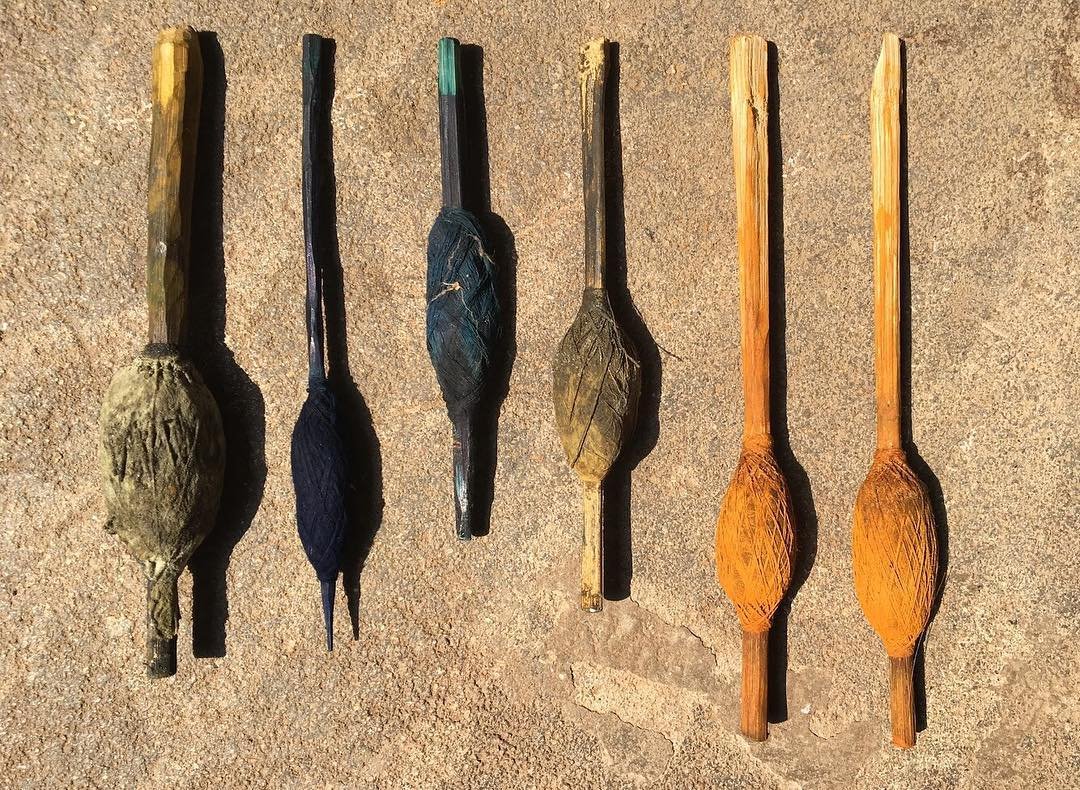What is Kalamkari?
Kalamkari is a symbol of careful labour, ancient methods and a big story displayed on every piece of cloth. The word “Kalamkari” is derived from the Persian words, ‘qalam’- pen and – Kari– craftsmanship which together signify this art form that means drawing with a pen.

( Source: Facebook )
Kalamkari is a kind of textile art that has many unique attributes which make it distinguished and treasured.
- Natural Dyeing Process: Kalamkari uses only natural dyes from sources such as flowers, seeds, cow dung and plants. This dependence on organic compounds allows it to have a unique palette of colours and eco-friendliness, distinguishing itself from other textiles that are made using synthetic dyes.
- Traditional Methods: It is made using delicate, old-fashioned techniques passed over the generations. It reveals a lot about the time that was spent on this complex process of hand-painting or block-printing cotton and so forth, which suggests focusing more on traditional craftsmanship.
- Designs and Backstory: More significantly, Kalamkari’s signature feature is its intricate patterns that comprise of religious tales, legendary stories about heroes and heroines or the descriptions of botany as well as animal behaviour may be found there.
- Beliefs in Healing Properties: While some see Kalamkari as a healing fabric, it has both physical and spiritual curing power. This mystical nature adds another level, one of reverence and importance beyond its artistic value
Unique Process of Kalamkari
23 steps in the journey from raw material to an exquisite art piece is called Kalamkari. Some of the main steps are:
- Preparing Cloth: This could be through soaping the fabric in water to remove dirt, sun drying it and solution treatment, which involves using natural technologies that consist of Myrobalan bud, flower paste, buffalo milk, etc..to get an even texture, as well as off white colour.
- Sketches and Outlines: The detailed work is done with charcoal pencils made from burnt tamarind branches, and the design outline of it all will be drawn up using a solution called Kasim Kaaram that consists of rusted iron fillings, cane jaggery as well palm jaggery fermented in water. To get rid of excess outlines, the cloth is washed.
- Developing Colours: Natural dyes and mordants are used to develop colours. Red is done with Alum, and natural dyes are obtained from brownish roots like Suruduchakka and Chavalakodi tree, they also boil to make red. This is followed by days of washing the cloth and bleaching it while keeping its colour areas intact.
- Adding Colours: The sheet of fabric is full of all kinds of colours derived from various sources such as pomegranate skin, myrobalan flower and mix or alum, which produce yellow colour; leaves use indigo to get blue shade. These colours are outlined by using kalam tapered edged and the chiselling line will be traced in some precise outlines drawn with a bamboo reed pen.
- Washing and Finishing: The cloth is cleaned well to get rid of the residue and vinegar helps it does this as well. The fabric passes through post-colour application and subsequent degumming, and washing stages before sun drying.
( Source: D’source )
Each of the steps is significant, as it takes a professional craftsman with profound knowledge of traditional techniques to create culturally rich and beautiful textiles.
Basically, what makes Kalamkari attractive is not only the bright patterns that it showcases but also those ancient skills, stories spoken through delicate lines and as a result devoted nature—evidence of how magnificent craftsmanship could stand over time.

Leave A Comment